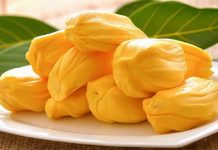Scientific name: Abelmoschus moschatus Medik.
Family: Malvaceae
Synonym: Hibiscus abelmoschus L.
Bengali/Vernacular name: Bandherosh, Mushakdana, Kalokasturi.
Tribal name: Huney gach, Kunei gach (Chakma); Thur mui (Lushai); Fluma umaiejik, Fluma oijik, Surma gach (Marma); Purnima gaith (Tanchangya).
English name: Musk mallow.
Description of the plant: An annual, erect, and branched herb, about a meter high or less, covered with long hairs. Leaves are orbicular-ovate to ovate, variously angled and 3 to 5-lobed or more, pointed at the tip, broad or heart-shaped at the base, toothed at the margin, hairy on both surfaces. Flowers axillary, solitary and in terminal clusters, large and corolla bell-shaped, yellow petals, purple at the base inside. Fruit a capsule, fulvous-hairy, pyramidal-oblong, acute, containing many musky seeds.

Plant parts used: Leaf, bark, root, and seed.
Ethnomedicinal uses: A paste is made with the leaves of the plant is applied on the biting place twice a day for three days to treat snake bite.
Juice is extracted from the roots of the plant is mixed with some salt then heat to purify and taken thrice a day (two tea spoons amount each time) for three days to treat cough and fever.
Mucilaginous decoction prepared from the root and leaves of the plant is recommended in gonorrhoea and venereal diseases.
A paste prepared from the bark of the plant is applied to treat headache, cuts, wounds, and sprain.
Infusion, decoction, or tincture of seeds used for nervous debility, hysteria and other nervous disorders.
The plant considered to treat bronchitis, asthma, dyspepsia, colic, diarrhoea, dysentery, flatulence, and vomiting.
Distribution: The species commonly occurs throughout the country.
Is this plant misidentified? If yes, please tell us….















… [Trackback]
[…] Find More on to that Topic: natureinfo.com.bd/abelmoschus-moschatus/ […]
… [Trackback]
[…] Here you can find 42184 more Information on that Topic: natureinfo.com.bd/abelmoschus-moschatus/ […]